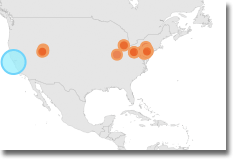If you haven’t heard about Value-Added Modeling (VAM) in relation to the controversial teacher ratings in Los Angeles and subsequent brouhaha in the world of education, chances are that you’ll hear about it in the coming year.
VAM is a family of statistical techniques for estimating the contribution of a teacher or of a school to the academic growth of students. Recently, the LA Times obtained the longitudinal test score records for all the elementary school teachers and students in LA Unified and had a RAND economist (working as an independent consultant) run the calculations. The result was a “score” for all LAUSD elementary school teachers.
Reactions to the idea that a teacher could be evaluated using a set of test scores—in this case from the California Standards Test—were swift and divisive. The concept was denounced by the teachers’ union, with the local leader calling for a boycott. Meanwhile, the US Secretary of Education, Arne Duncan, made headlines by commenting favorably on the idea. The LA Times quotes him as saying “What’s there to hide? In education, we’ve been scared to talk about success.”
There is a tangle of issues here, along with exaggerations, misunderstandings, and confusion between research techniques and policy decisions. This column will address some of the issues over the coming year. We also plan to announce some of our own contributions to the VAM field in the form of project news.
The major hot-button issues include appropriate usage (e.g., for part or all of the input to merit pay decisions) and technical failings (e.g., biases in the calculations). Of course, these two issues are often linked; for example, many argue that biases may make VAM unfair for individual merit pay. The recent Brief from the Economic Policy Institute, authored by an impressive team of researchers (several our friends/mentors from neighboring Stanford), makes a well reasoned case for not using VAM as the only input to high-stakes decisions. While their arguments are persuasive with respect to VAM as the lone criterion for awarding merit pay or firing individual teachers, we still see a broad range of uses for the technique, along with the considerable challenges.
For today, let’s look at one issue that we find particularly interesting: How to handle teacher collaboration in a VAM framework. In a recent Education Week commentary, Kim Marshall argues that any use of test scores for merit pay is a losing proposition. One of the many reasons he cites is its potentially negative impact on collaboration.
A problem with an exercise like that conducted by the LA Times is that there are organizational arrangements that do not come into the calculations. For example, we find that team teaching within a grade at a school is very common. A teacher with an aptitude for teaching math may take another teacher’s students for a math period, while sending her own kids to the other teacher for reading. These informal arrangements are not part of the official school district roster. They can be recorded (with some effort) during the current year but are lost for prior years. Mentoring is a similar situation, wherein the value provided to the kids is distributed among members of their team of teachers. We don’t know how much difference collaborative or mentoring arrangements make to individual VAM scores, but one fear in using VAM in setting teacher salaries is that it will militate against productive collaborations and reduce overall achievement.
Some argue that, because VAM calculations do not properly measure or include important elements, VAM should be disqualified from playing any role in evaluation. We would argue that, although they are imperfect, VAM calculations can still be used as a component of an evaluation process. Moreover, continued improvements can be made in testing, in professional development, and in the VAM calculations themselves. In the case of collaboration, what is needed are ways that a principal can record and evaluate the collaborations and mentoring so that the information can be worked into the overall evaluation and even into the VAM calculation. In such an instance, it would be the principal at the school, not an administrator at the district central office, who can make the most productive use of the VAM calculations. With knowledge of the local conditions and potential for bias, the building leader may be in the best position to make personnel decisions.
VAM can also be an important research tool—using consistently high and/or low scores as a guide for observing classroom practices that are likely to be worth promoting through professional development or program implementations. We’ve seen VAM used this way, for example, by the research team at Wake County Public Schools in North Carolina in identifying strong and weak practices in several content areas. This is clearly a rich area for continued research.
The LA Times has helped to catapult the issue of VAM onto the national radar. It has also sparked a discussion of how school data can be used to support local decisions, which can’t be a bad thing.






